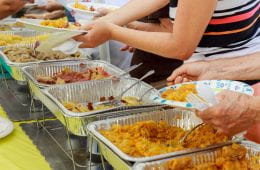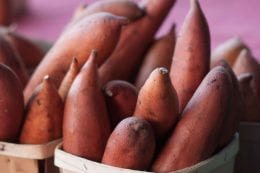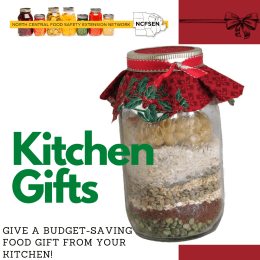
The holidays mean entertaining friends and family with food! Plan now to serve up platters of safely prepared and served food.
Use smaller serving dishes to replenish food more often. Keep cold foods cold and hot foods hot so all can enjoy.
Warming trays, slow cookers, chaffing dishes and other gadgets can keep hot foods hot. Cold foods can be kept in the refrigerator until serving time or served on ice on the buffet.
Once a serving dish is almost empty, trade it for a fresh serving dish. Do not add new food to a used dish of food.
Keep an eye on the clock. Hot or cold perishable food should be used within two hours when left at room temperature.
Got leftovers? Refrigerate them within two hours. Divide large amounts of food into smaller containers to chill quickly.
Many family recipes may contain raw or lightly cooked eggs. It is risky to consume raw or undercooked eggs, especially for pregnant women, young kids, older adults and those with weakened immune systems. Be mindful about your friends and family by safely preparing foods such as eggnog, homemade Caesar salad dressing, ice cream or other recipes with raw eggs. Heating eggs to 160°F or using pasteurized eggs can keep away unwanted foodborne illness.
Learn more at www.fda.gov/food/buy-store-serve-safe-food/serving-safe-buffets

 Sometimes a meal in a jar can make life easier! Giving the gift of food mixes in a jar can be budget friendly for the gift-giver and a time-saving blessing for the giftee!
Sometimes a meal in a jar can make life easier! Giving the gift of food mixes in a jar can be budget friendly for the gift-giver and a time-saving blessing for the giftee! The Brewing and Fermentation Science short course is a 3-day program held January 8-10, 2024, in which hobbyists, professional brewers, and other participants will have the opportunity to learn and experience the fundamentals in brewing science, brewing technology, safety, and sensory analysis. Participants will gain valuable industry insight from the professionals at Manhattan Brewing Company, as well as instruction from faculty at Kansas State University and other industry professionals on the brewing process and the science behind it.
The Brewing and Fermentation Science short course is a 3-day program held January 8-10, 2024, in which hobbyists, professional brewers, and other participants will have the opportunity to learn and experience the fundamentals in brewing science, brewing technology, safety, and sensory analysis. Participants will gain valuable industry insight from the professionals at Manhattan Brewing Company, as well as instruction from faculty at Kansas State University and other industry professionals on the brewing process and the science behind it.

